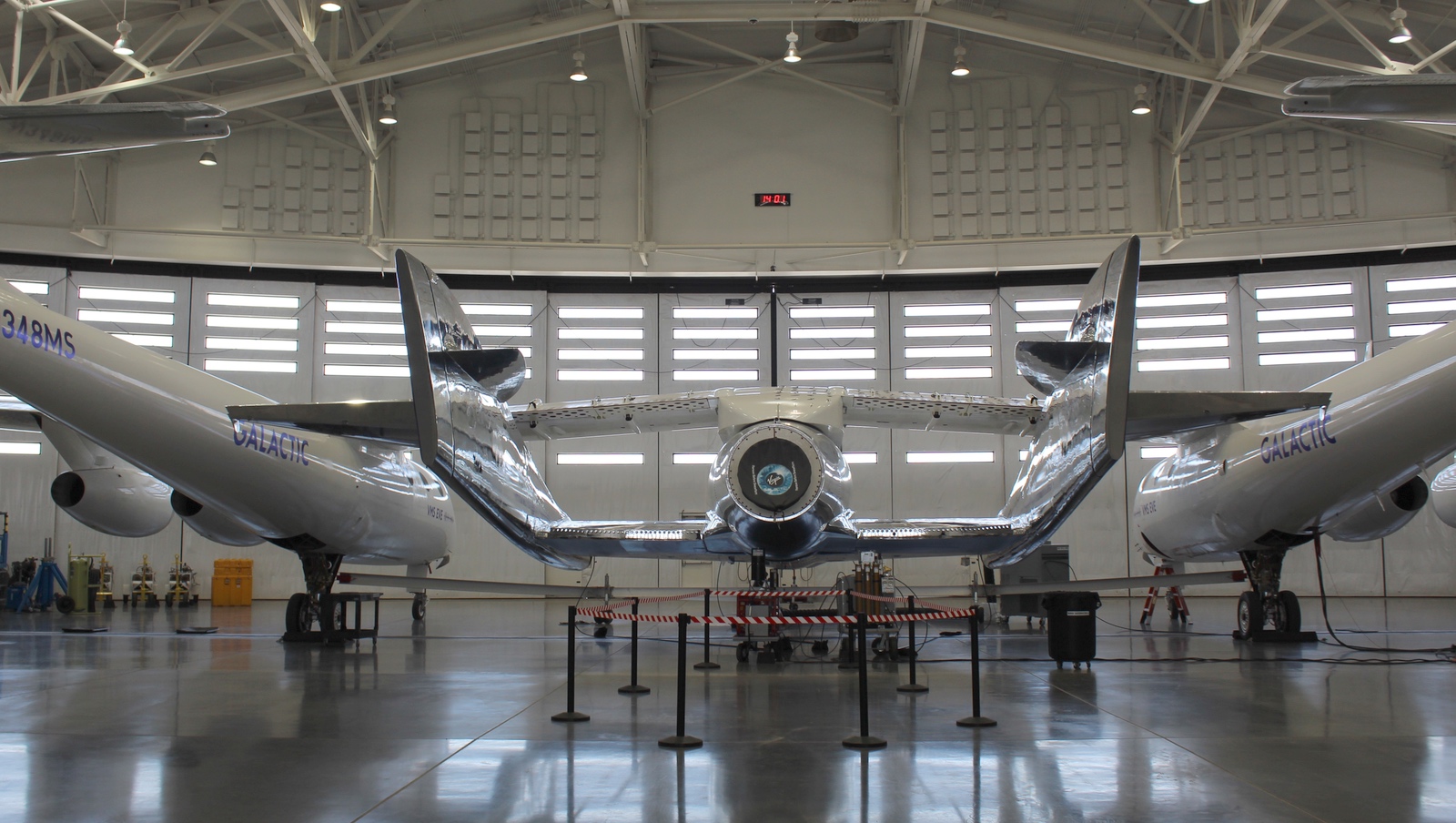SPACEPORT AMERICA, N.M. — Virgin Galactic is set to conduct its first commercial SpaceShipTwo suborbital spaceflight June 29, one that will demonstrate the readiness of the vehicle for commercial operations as well as its role as a research platform.
The company made final preparations June 28 for the Galactic 01 mission, the second suborbital flight of the company’s SpaceShipTwo spaceplane in as many months. Virgin has billed the flight as the company’s long-delayed transition to commercial operations after an extended test campaign.
Virgin Galactic is planning for a takeoff of its VMS Eve mothership aircraft with the VSS Unity spaceplane attached at about 10:30 a.m. Eastern June 29. Unity will separate from Eve nearly an hour later, igniting its hybrid rocket motor for its suborbital flight, then landing back at the spaceport.
The Galactic 01 mission, Virgin Galactic’s first fully commercial flight, will carry three Italian payload specialists to perform a set of experiments. Walter Villadei and Angelo Landolfi of the Italian Air Force and Pantaleone Carlucci of Italy’s National Research Council plan to conduct 13 experiments ranging from biomedical data collection to studies of combustion in microgravity during the flight.
Accompanying them in the cabin will be Colin Bennett, a Virgin Galactic astronaut instructor who was on the July 2021 flight of Unity that carried company founder Richard Branson. He will assess the research flight experience during this flight.
While the bulk of Virgin Galactic’s business will be flying private astronauts — the company has about 800 people who have signed up for suborbital flights — it argues that research flights like Galactic 01 will be an important part of its business.
“It’s perfect that this first commercial mission is a research mission. That shows that this is another lab environment that is producing science and technologies that we can invest into the people back on Earth,” said Sirisha Bandla, vice president of government affairs and research operations at Virgin Galactic, in a June 28 interview.
The company has flown research payloads on prior test flights, like those provided through NASA’s Flight Opportunities program. That included work by Bandla herself on the July 2021 flight. This mission, though, is devoted to research with a test program developed by the Italian team. “It is a combination of everything that we have tested on our spaceflights to date,” she said.
Bennett will be on board to monitor how the Italian payload specialists carry out their work. “He will look at how everyone’s moving around the cabin, conducting their research, and do a holistic evaluation of the research mission so that we can continually improve on the experience,” she said.
Much of the training for research flights is the same as private astronaut flights. The key difference, Bandla said, is practicing the “choreography” of activities by the researchers during their brief flight, as well as working through the payload safety reviews for the experiments.
As the company moves into regular operations, it plans to conduct research flights on a set schedule, mixed in among the private astronaut missions. “The goal is to have it at the same time each year so that researchers can time their grants and their proposals through whatever agency funds their research and have predictable and reliable access for their science,” she said.
The emphasis, she added, is on having a steady cadence of flights, both for researchers looking to test experiments before flying them into orbit and for those for whom suborbital flights are sufficient. “The number one thing that we hear is we want repeatable and regular access to space,” she said of feedback from the research community.
